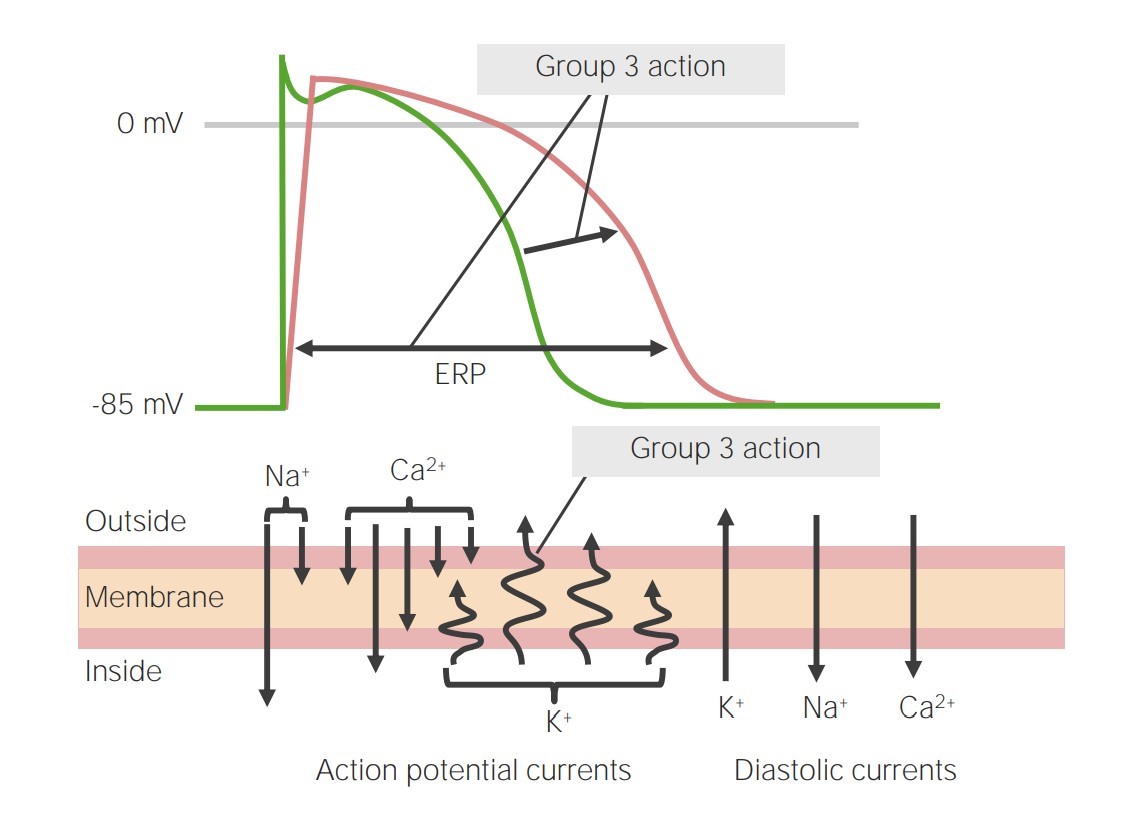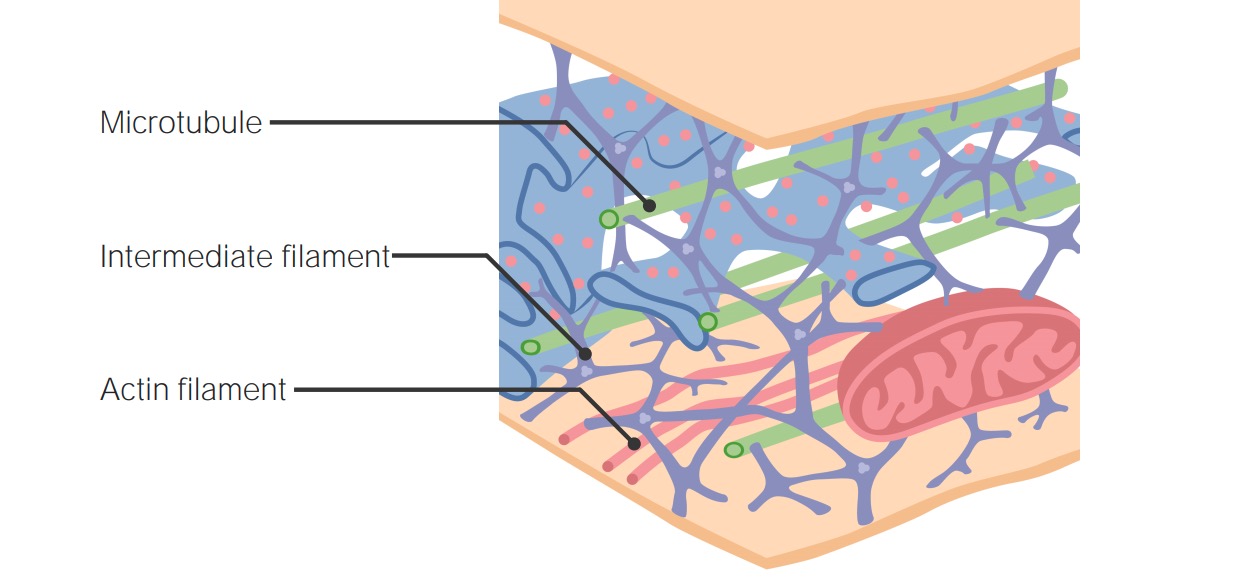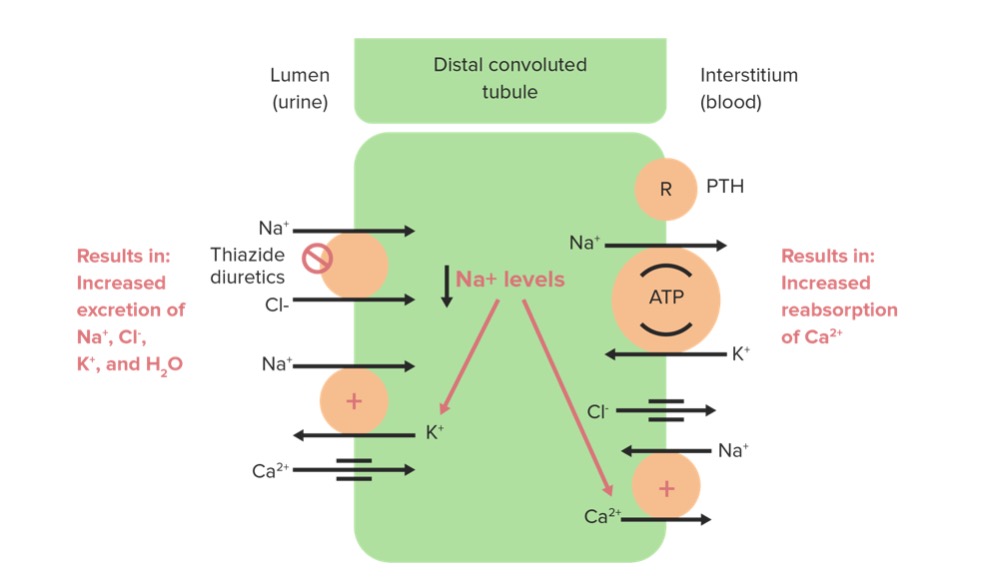Playlist
Show Playlist
Hide Playlist
Ion Channels: Definition, Types & Function
-
Slides GP Membrane Physiology.pdf
-
Download Lecture Overview
00:01 Okay. Let’s move on to our next type of channel. 00:05 These are ion channels. 00:07 Ions channels are going to be pretty selective to only allow certain ions to transport across. 00:13 The prototype that we’re going to use is going to be the nicotinic acetylcholine receptor. 00:20 But for ion channels to work, you need to make sure you have a concentration gradient. 00:25 That concentration gradient can be established by another type of transporter such as a pump or you take advantage of that ion difference between inside the cell and outside the cell. 00:38 There is usually a limited amount of time that an ion channel is open and it usually requires some sort of activation type of process. 00:48 But this activation type of process can be varied, but it hints on the ion channel. 00:53 Some of them are voltage-gated, which means there needs to be a small electrical potential difference across that cell membrane. 01:01 A great example of this is in nerves, where you have sodium and potassium channels opening and closing, but they won’t open and close until there’s enough of an electrical difference across that membrane of the nerve. 01:16 Other types of channels are ligand-gated. 01:19 This means that they need a specific signal to open. 01:23 Sometimes it only involves one ligand, sometimes it involves two. 01:28 But besides voltage and ligand-gated channels, there a few others. 01:33 Some of the different cells that you have respond to stretch, some respond to mechanical deformation. 01:42 So there are other ways to open up ion channels, but the two main ones are voltage-gated and ligand-gated. 01:48 Our prototype, the nicotinic acetylcholine receptor will use a ligand-gated channel mechanism. 01:55 The other thing about ion channels that we always have to keep in mind is usually there’s a selectivity filter in them, and this allows for only then one or a few selected types of ions to move through at any one time. 02:10 So, you have sodium channels, you have potassium channels, you have calcium channels, you have chloride channels, and only every now and then, we have a non-selective, for example positive or cation channel occur. 02:27 So let’s go to our prototype now. 02:28 This is the nicotinic acetylcholine receptor and this is very important in transferring certain types of cell signals and certain ions. 02:40 You need two ligands to bind and these are two acetylcholines that will bind to the portion of the acetylcholine receptor. 02:49 By both binding, it will open up that selectivity filter, and therefore, allow ions to travel through it. 02:59 In fact, though this is very selective to only allow positive ions to pass. 03:05 Now which positive ions are going to pass? In this case, we have three choices. 03:11 Is it going to be calcium, is it going to be sodium, is it going to be potassium? For this, you have to think back in to how these are partitioned. 03:21 If you have a gradient across that cell membrane, you will be able to answer that primarily sodium will go across of influx into the cell. 03:30 Although there might be a little bit of calcium, the primary one will be sodium. 03:35 It doesn’t work to have potassium cross because the concentration gradient is going in the opposite direction. 03:44 So where do you use these channel and why is it so important? Well, it is the primary channel to engage muscle contraction. 03:53 So, if your nerves want to tell your muscles to contract, you’re going to have to use a nicotinic acetylcholine receptor, and this is how your muscles figure out, oh, my goodness, we need to contract. 04:05 It is also very important in ganglionic function. 04:09 And what the ganglia are, are specific aspects just outside for the autonomic ganglia, sympathetic chain, just outside the spinal cord, or you might have parasympathetic ganglia that are located closer to an organ. 04:23 And these are synapses in which one nerve stops, sends a chemical signal to another nerve so it propagates on, and these are in certain spots known as ganglia. 04:34 So these nicotinic acetylcholine receptors are very important for both neuromuscular function and nervous system function.
About the Lecture
The lecture Ion Channels: Definition, Types & Function by Thad Wilson, PhD is from the course Membrane Physiology.
Included Quiz Questions
A nicotinic acetylcholine receptor located in an autonomic ganglion is opened by which of the following mechanisms?
- Ligand-gated
- Voltage-gated
- Stretch-activated
- Osmolality-activated
- Insertion into an intracellular receptor
What is an ion channel?
- A selective channel in the membrane that allows only a particular ion or certain set of ions to be transported across
- A non-selective channel in the membrane that allows an ion or certain set of ions to be transported across
- A protein that requires phosphodiesterase cleavage
- A fat-soluble protein
- A set of proteins arranged in a ring in the cell membrane
What condition is necessary for ion channels to work?
- A concentration gradient
- Changes in osmolarity
- A stable electrochemical voltage
- A decreased electrochemical voltage
- The correct number of receptors
What properties are typical of ion channels?
- Open for a limited time and in the presence of an activator
- Non-selectivity
- Automatic opening in the presence of large amounts of extracellular sodium
- Automatic closing in the presence of a stimulus
- Automatic opening in the presence of calcium
To which family does the nicotinic Ach receptor belong?
- The Cys-loop superfamily of ionotropic receptors
- Ionotropic glutamate receptors
- N-methyl-D-aspartate receptor
- GABAA receptors
- ATP-gated channels
How many ligands need to bind to the nicotinic Ach receptor for activation?
- Two Ach molecules
- Two sodium ions
- One sodium ion
- One Ach molecule
- Two potassium ions
What ion is most likely to pass through the nAchR?
- Sodium
- Potassium
- Chloride
- Calcium
- Magnesium
Customer reviews
5,0 of 5 stars
| 5 Stars |
|
5 |
| 4 Stars |
|
0 |
| 3 Stars |
|
0 |
| 2 Stars |
|
0 |
| 1 Star |
|
0 |






